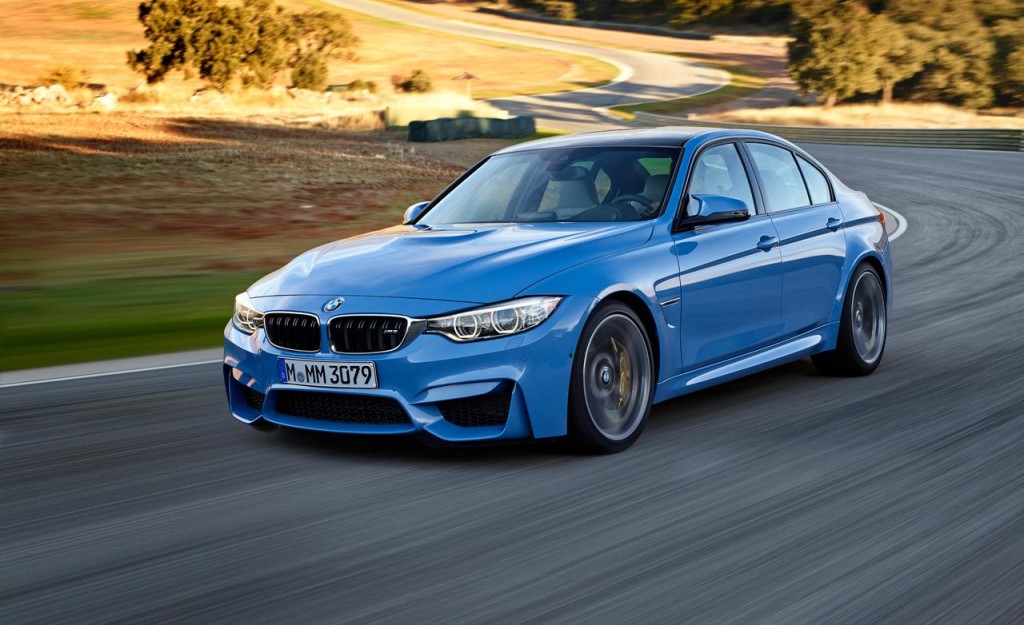BMW has announced the 2015 M3 Sedan and M4 Coupe, high-performance versions of the new 3 Series and 4 Series that launched this year. The new Ms have stirred controversy in a variety of ways, but one must remember that the M cars traditionally don’t follow a specific mold.
Back in 1988, BMW launched the M3 in car market with a high-revving four-cylinder engine even though the top non-M 3 Series model was equipped with an inline-six. The reason: the little four-banger weighed less. The power-dense 2.3-liter four produced 197 horsepower, which was enough to make the original M3 one of the most sought after performance BMWs of all time. Two successive generations of M3 stepped up the cylinder count to six and provided a nice bump in power, and the M3 that came after them was equipped with a screaming V8. The M3’s history dictates that M cars aren’t about staying the same – they’re meant to push limits – and M Motorsport engineers decided that the new M3 Sedan and M4 Coupe would push limits best with a twin-turbocharged inline-six.
Both the M3 and M4 come standard with a six-speed manual transmission, connected to a carbon-fiber reinforced plastic (CFRP) driveshaft, connected to a mechanical limited-slip differential. À la Nissan 370Z, the new six-speed manual features an automatic throttle blip setting to rev-match downshifts. If buyers opt for the seven-speed dual-clutch transmission, the multi-plate limited slip diff is controlled electronically and can disengaged the diff’s clutch plates completely or lock them up 100 percent. DCT-equipped cars also get launch control.
In addition to using CFRP in certain components to save weight – for example, both M3 and M4 get a carbon roof – the suspension components have been redesigned and are made in aluminum. The front suspension of each model gets aluminum control arms, wheel carriers and axle subframe, which is bolted directly to the chassis with no bushings to reduce suspension elasticity and improve handling precision. Ball joints are used instead of rubber bushings to further improve suspension rigidity and maintain handling precision. Additionally, each model gets an aluminum stiffening plate and a CFRP front strut-tower brace to keep the front end stiff.
Standard wheels are 18-inchs (19-inchers are optional), with 255-section tires in front and 275-section at the back end. The wheels cover brakes with steel rotors, though optional carbon-ceramic units with gold-painted calipers can be had, as well.
The widened rear wheel arches were deemed necessary to fit the wheel and tire setup needed to handle the additional horsepower. They also look cool.
The interior is spruced up with M-style touches, including door sills, the driver’s footrest, a gearshift lever, circular instruments with white graphics and the all-important, leather-clad steering wheel. M sport seats with a one-piece back panel (electronic adjustment optional) and color-contrast stitching, look grippy and good to use, too. The rear seats feature a 60/40 split, just in case you ever need to haul more than ass.
The new M3 and M4 are departures from previous M3s, but if the specifications point to anything, it’s that BMW and its M division are still pushing boundaries, just as they always have. Look for the M3 and M4’s world debut at next month’s Detroit Auto Show. The pair will go on sale in early summer as 2015 models.



